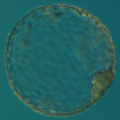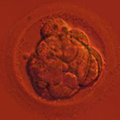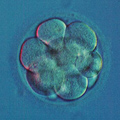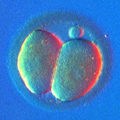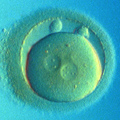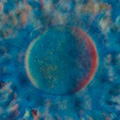Frequently Asked Questions about PGD and IVF

I am going through IVF and PGD cycle and have to choose between Day-3 Embryo Biopsy with fresh Embryo Transfer and Day-5 Blastocyst Biopsy and Frozen Blastocyst Transfer. My clinic recommends Blastocyst Biopsy because 40% of Day 3 embryos are mosaic and thus the chance for misdiagnosis is unacceptably high.
The statistics of Day 3 vs. Day 5 human embryo mosaicism is a very common misconception. It is based upon established scientific facts but the confusion is 100% man-made. Let us start with the facts:
The first ever paper investigating mosaicism in human blastocysts was published by us (Evsikov S. and Verlinsky Y. 1998 Mosaicism in the Inner Cell Mass of Human Blastocysts. Hum. Reprod. 13:3151-3155). The findings from those years were confirmed by many independent researchers and by now it is generally accepted that human blastocyst mosaicism is about 5%.
The confusion is being built around the fact that on Day 3 genetically abnormal human embryos have an astonishingly high rate of mosaicism, up to 60%. This finding was initially published by the most respected name in PGD field, Dr. Santiago Munne and his group at Reprogenetics. Our own results (not published) repeatedly confirm this fact. However, the keywords here are "GENETICALLY ABNORMAL embryos." In clinical terms this means that the embryo may be called abnormal for, say, chromosomes 13 and 18 after PGD testing but in actuality some blastomeres may also be found abnormal for chromosomes other than 13 or 18. Such embryos are mosaic, but since they would have been called genetically abnormal no matter which blastomere was analyzed on Day 3, this mosaicism has absolutely no effect on the clinical aspect of PGD.
Leo Tolstoy once wrote: "Happy families are all alike; every unhappy family is unhappy in its own way." In much the same way, it can be said that every cell in a genetically normal embryo is also genetically normal and alike, but cells in a genetically abnormal embryo may be abnormal in their own way. Let us call this the Anna Karenina principle of mosaicism.
In recent years some PGD practitioners have been quoting the statistics of 40% mosaicism in genetically abnormal human embryos while omitting the words "genetically abnormal." If one was to believe that quotation, then it would lead to the inevitable conclusion that all PGD cases done between 1990 and the introduction of laser-assisted blastocyst biopsy around 2007-2009 had a misdiagnosis rate of 40%! The fact that ViaGene Fertility, RGI, Reprogenetics, and other leading PGD laboratories are still in business, should suggest this is not so.
In short, some embryos ARE mosaic, but the chances that a boy will be born from an embryo analyzed by us as a girl is 0%, NOT 40%!
Is it advisable to do Day 5 biopsy because by Day 5 abnormal embryos have a chance to go through "Self Correction" and become normal?
In recent years there has been a revival of the old theory of "self correction" to explain data acquired from some PGD laboratories. The theory proposes that even if Day 3 embryos were mosaic, by Day 5 they would correct themselves and become normal. In mid-nineties one of the leading scientists went as far as proposing that Day 5 Blastocyst Transfer is the best way to do PGD for the patients with chromosomal translocations. In other words, to perform PGD by not doing PGD at all! Although the theory did not make any sense, the weight of the authority was so high that our paper on the subject (Evsikov S., Cieslak J. and Verlinsky Y (2000) Effect of Chromosomal Translocations on the Development of Preimplantation Human Embryos In Vitro. Fertil. Steril. 74:672-677), contradicting this theory with actual clinical data, could not be published in any of the European journals.
It is easy to see that there is another, very likely, explanation for the deviations between Day 3 and Day 5 results explained by "self-correction" theory. The researchers simply failed to perform accurate analysis of Day 3 samples, or the Day 5 samples for that matter. FISH and Microarray are very complex procedures which leads many newcomers to the field of PGD to make mistakes in analysis.
As is usually the case, there is some truth behind the "self-correction" theory. A number of abnormal embryos (called genetically "chaotic") arrest at the cleavage stage and thus never reach the blastocyst stage. Technically speaking, each and every genetically abnormal embryo will go through "self-correction" at some point, be it at the preimplantation, or prenatal, or postnatal period. However, lets not forget that if one extends the noble ideas of "self-improvement and spiritual advancements" into the field of genetics, the results of such "self-correction" beliefs may vary from confusing (see "Lamarkism") to horrifying (see "Lysenko").
Would the PGD analysis of Day 5 biopsy sample be more likely to reveal Mosaicism?
For those seriously concerned about embryo mosaicism, we do offer a unique service available to doctors in the LA area. We can perform Day 4 biopsy from the opposite sides of the embryo, extracting one cell from each side, and analyzing both cells. This gives us a chance to reveal embryo mosaicism.
Some proponents of Day 5 biopsy have suggested that it is superior to Day 3 because several cells (more than one, usually 5-15) are biopsied, which may reveal mosaicism. This is not entirely correct. First of all, if PGD is done utilizing Microarray technology, then all 5-15 biopsied cells are placed into one tube and analyzed as one. The PGD results will be an AVERAGE of all these cells, thus mosaicism cannot be revealed using Microarray technology. Even if each of these 5-15 cells were analyzed individually, mosaicism may not be revealed. Because at this early stage of development cells do not migrate as they divide, the 5-15 cells collected during Day 5 biopsy would likely be the progeny of only one Day 3 cell (blastomere), which would mean these cells taken from the same part of the embryo would be genetically identical, even if the embryo is mosaic.
However, as mentioned above, the chances of having a mosaic child after PGD are extremely small because the overwhelming majority of mosaic embryos would be diagnosed as genetically abnormal, regardless of whether Day 3 or Day 5 biopsy is performed.
Why is the Day 5 biopsy currently favored by Doctors and PGD Labs? Is it superior to the Day 3 biopsy in any way?
As discussed above, Day 5 biopsy does not increase the chances of detecting Mosaic embryos. A question does arise as to why would someone overemphasize the benefits of Day 5 blastocyst biopsy, one of the most traumatic procedures imaginable.
From the perspective of PGD practitioners we must say that blastocyst biopsy makes genetic testing much easier:
- Less Embryos to Analyze - not so many embryos to analyze because not all human embryos are able to survive for five days in vitro. Let us repeat this again: the embryos which arrest in vitro may have survived in vivo, had they been transplanted on Day 4 or Day 3.
- Easier to Analyze - More than one cell is available for analysis on Day 5, this is especially important if testing is performed using Microarray technology.
- More time to Analyze - If blastocysts are frozen then the PGD Lab is not stressed about returning results within 24 hours.
What about the benefits for the patient? In cases where a patient has 15 or more embryos available, waiting until Day 5 would allow for the natural selection of the "toughest" embryos. There is also some benefit in freezing the embryos and implanting them 2-3 months later, during the woman's natural cycle.
However, for patients of Advance Maternal Age (AMA) which may have only a few embryos available, it's always best to perform the transfer as fast as possible because some perfectly healthy embryos may arrest in vitro between Day 3 and Day 6. These same embryos can implant and develop into perfectly healthy babies if transferred on day 3 or 4. This is why in some of our LA clinics Doctors prefer to do Day 3 biopsy and Day 3 Embryo Transfer, and at ViaGene we are quick enough to provide same day PGD results.
What is the difference between PGD, PGS, and PGD-AS?
Preimplantation Genetic Diagnosis (PGD) and Preimplantation Genetic Screening (PGS) are terms referring to exactly the same medical procedure. Practically speaking, PGD and PGS can be used interchangeably. Preimplantation Genetic Diagnosis - Aneuploidy Screening (PGD-AS) is a term for PGD procedure if it is used to test embryos for aneuploidy. Aneuploidy is the most common genetic condition tested for, thus making PGD-AS the most common PGD test. If used for testing embryos for translocations and single gene disorders then the more general PGD or PGS terms should be used.
A few years ago there was an attempt to substitute the well-established term PGD for the newly introduced terms PGS and there occurred a minor debate on the subject. To understand the debate, first let us look at the terms "Diagnostic Test" and "Screening Test." According to the Field Epidemiology Manual, a Diagnostic Test is one that provides a definitive diagnoses, has high sensitivity and accuracy, low levels of false positive results, significant cost, and is significantly invasive. A Diagnostic Test is usually preformed after first observing symptoms of a potential disease, either through direct observation or use of less invasive procedures. On the other hand, a Screening Test results in a probable, though not definitive diagnoses. It is characterized by high sensitivity which may be achieved by sacrificing accuracy by making the test more prone to false positive results. A Screening Test is also usually inexpensive, and often minimally invasive. Thus, it is common practice to first screen patients using low cost and minimally invasive screening tests, and then to double check the positive results with a more invasive diagnostic test.
It has been argued that because PGD is sometimes prone to false positive results, and is preformed on embryos which were not previously observed to have signs of a genetic defect, the test should be described as Screening, or PGS.
In our opinion, renaming PGD for PGS was just an awkward attempt to lower the liability of PGD practitioners in a situation of a clinical misdiagnosis. The fact remains though that Preimplantation Genetic "testing" is a Diagnostic procedure. PGD is Not inexpensive, and is rather invasive to the individual embryo, especially if Blastocyst biopsy is performed. A standard PGD case costs several thousand dollars. As to the invasiveness of the procedure, one can hardly call a procedure which involves a biopsy of the 1/8th of an embryo minimally invasive. It is true, when done correctly, the procedure is not life threatening to the embryo, much like bone marrow biopsy isn't life threatening to a fully grown human. However, one could hardly call either procedure minimally invasive. Thus preimplantation genetic testing violates the two main definitions of a screening test.
The fact that PGD is not 99.999% accurate does not mean that this is not a Diagnostic procedure: not a single medical diagnostic procedure is 100% accurate! Even such a test as whether a person is dead or still alive made some people (Edgar Allan Poe being the most notable among them) uncomfortable, but as far as we know there has been no attempts to call MRI a "screening" procedure.
I am a patient and I would like to use your PGD services. What are my options?
If your IVF Center does not use ViaGene for PGD cases, but you would like to use us, you may ask your doctor to contact us. We do offer a unique EGS service for 5 chromosome PGD able to analyze both Day 3 and Day 5 samples, with each cell of Day 5 embryo analyzed individually. This service is available to centers throughout United States. Our 24 chromosome OGS and Microarray services are currently available only for Doctors in the LA area.
If you are not currently treated by any IVF doctor and reside in (or are willing to travel to) the Greater Los Angeles or Orange County area, please contact us and we will be happy to refer you to one of our partner centers.

